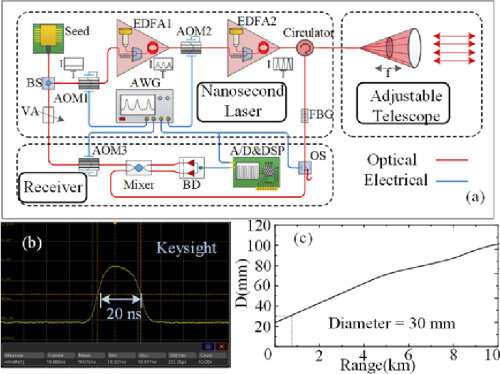Researchers realize hyperfine wind observation with meter-scale and sub-second resolutions

A research team led by Prof. Dou Xiankang from the University of Science and Technology of China (USTC) of the Chinese Academy of Sciences realized continuous wind detection at spatial and temporal resolutions of 3 m and 0.1 s for the first time. The study was published in Optics Letters.
Pulse coherent Doppler wind LiDAR (PCDWL) is of great importance in aerospace safety and numerical weather forecasting. However, it remains a challenge to achieve wind detection at meter spatial and sub-second temporal resolutions.
In this study, researchers optimized the LiDAR and applied a novel algorithm that significantly enhanced the accuracy and robustness of wind field observation. As a result, hyperfine PCDWL (HPCDWL) that features eye-safety, lightweight, stability, and environmental adaptability was developed.
It is verified that the wind detection variance of the LiDAR is below 0.5 m/s compared to calibration equipment. Additionally, the LiDAR completed a continuous observation of the wakes of a high-speed train at a spatial and temporal resolution of 3 m and 0.1 s, respectively, and its detection result was similar to the fluid dynamics simulation.
More information: Chen Liang et al, Meter-scale and sub-second-resolution coherent Doppler wind LIDAR and hyperfine wind observation, Optics Letters (2022). DOI: 10.1364/OL.465307
Journal information: Optics Letters
Provided by University of Science and Technology of China



















